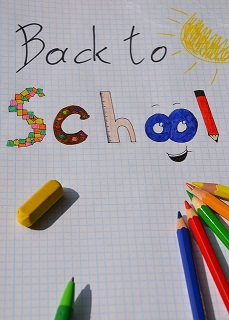Uncategorized
Educational Facilities With Alternative Uses
Written by: Gina Taranto
Educational Facilities with Alternative Uses
Educational facilities, school buildings especially for grades kindergarten through 12th, don't get used most of the time. Outside of regular school hours, these buildings are completely empty and yet they are still perfectly usable spaces. So what can be done about educational facilities that are left empty? Most school buildings are one of the best assets in a local community and yet 30% of the available daylight hours are not used according to the United States Department of Education. In order to make the most out of this particular asset, these educational facilities can be put to better use with alternatives. This not only helps schools potentially bring an extra income to support their curriculum but it also helps the community find facilities for different services that are otherwise unavailable.
Cultural and Social Hubs
These facilities, when used after school hours, can be used for cultural and social events. Think of Community Theaters. This is a hidden advantage for many communities who need a place to not only practice but perhaps perform. Theater and art centers are hard to come by in some areas and yet school buildings are already prepared to house such performances especially when they were designed to conduct student performance. Educational facilities can offer local community organizations the opportunity to come together for rehearsals and performances regularly.
- Other social events that can take place in these educational facilities include a meeting place for garden clubs. Garden clubs might want a location where they can beautify their community and having the freedom to plant flowers on a school property can give them that opportunity to give back. And of course Garden clubs can meet in these educational facilities for regular administrative duties as well.
- Cultural activities can take place in educational facilities. If there are local ethnic groups represented in the community, certain holidays might be celebrated for the whole of the community without a facility big enough to hold them. This is where educational facilities can be of great use.
- Spiritual activities can take place in these educational facilities after hours such as meditation classes for a local Social Service, yoga classes in a large gymnasium, or adult education classes that are not tied directly to any type of degree or institution but simply a community-based social activity where speakers are brought in to give quick lessons.
Health and Recreation
 School properties can be a place for health, leisure, and recreational opportunities such as local fitness clubs or swimming groups. If the school has a swimming center it can be a place for the community to come and swim after hours. The local parks and recreation department can facilitate health-based classes, specific for senior citizens or for young children or for everyone in between on that campus.
School properties can be a place for health, leisure, and recreational opportunities such as local fitness clubs or swimming groups. If the school has a swimming center it can be a place for the community to come and swim after hours. The local parks and recreation department can facilitate health-based classes, specific for senior citizens or for young children or for everyone in between on that campus.
If the school has an auto shop or a welding class, those same facilities can be used as a community-based location for car repairs especially for underprivileged individuals after hours. The welding class can be open to local professionals in the community who might need to use some of the welding materials or equipment that the school has and the company does not. This could also be an opportunity to teach welding classes or basic car repair classes to community members by the regular school teachers in exchange for a small payment for each student in attendance, something that, again, can increase money for the school.
Alternative Working Hubs
Educational facilities are the perfect set up for alternative working hubs. In these hubs, individuals who are working night shifts or evening shifts for companies can make use of the physical facilities already provided, such as desks, phones, and computers. During breaks, individuals can get on their mobile device and play games to relax before returning to work.
How This Benefits Schools
Schools that allow for these alternative uses reap a range of benefits. Firstly, it's easier for school districts to get the money they need for a new facility especially when community members already see the usefulness of the existing facilities as it gives back to the entire community. With more people on the premises during daylight hours, it reduces the risk of vandalism. Similarly, it improves the school and the community by offering more activities for everyone. There is a potential for additional revenue for the schools while local businesses and organizations are more likely to contribute in terms of donations whether it's monetary or equipment based because those organizations and businesses know that they will get some community use out of the buildings.

